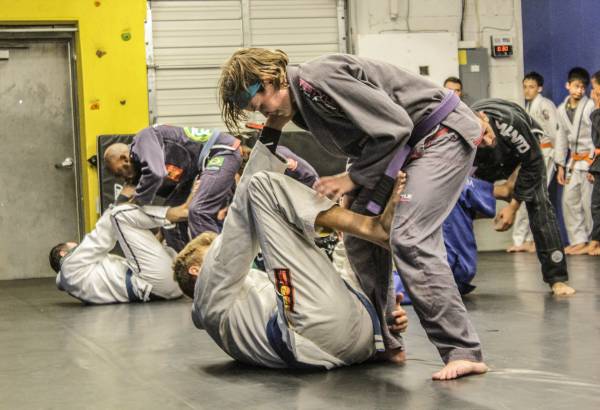There are two questions I frequently receive from Brazilian jiu jitsu practitioners.
- “What is the best strength and conditioning program for Brazilian jiu jitsu?”
- “How should I cut weight for a tournament?”
The two questions are different in subject matter, but the answers can be arrived at through the same thought process.
In fitness and BJJ, there are many relationships that are missed. I am not talking about the relationships you build with your teammates. I am referring to the relationships in a training program.
Relationships with your teammates is one thing – your relationship with training is completely different.
On the surface, these relationships seem obvious, and yet most people choose to ignore them. But understanding these elements and applying them will go a long way when answering those two most frequently asked questions.
Relationship 1: Volume to Intensity
Volume is the amount of work being done. Using the bench press, for example, if you perform 3 reps using 100lbs, your total volume for that set is 300lbs. You can also add up the total number of reps for each exercise as another method of calculating volume.
Intensity is the level of difficulty of your work. A sprint would be a high intensity activity while walking would be low intensity, to illustrate the two extremes.
“In the context of BJJ, if you are training at a high intensity, then the amount of training time needs to be scaled back.”
The more volume you do in a workout, the lower the intensity needs to be. In the context of BJJ, if you are training at a high intensity, then the amount of training time needs to be scaled back. If you are just flowing or practicing light drills, you can increase your training time. The harder you train, the shorter your sessions should be.
Relationship 2: Strength and Conditioning to Brazilian Jiu Jitsu
A mistake I see people make is doing too much of both. As a BJJ practitioner, the majority of your time needs to be spent on the mat. Strength and conditioning does not replace BJJ. It is just there to help.
Therefore, the relationship between strength and conditioning and BJJ is an inverse one, just like with volume and intensity. The more time you spend on the mat, the less time you should spend in the gym. If you train BJJ four or five days a week, you only need one or two days of strength training.

Your time on the mat is the most important element of your training.
Some people find it difficult to get to the academy more than two days a week. If that is the case, then the number of their strength and conditioning days should be higher. Someone training BJJ twice a week can handle three days of strength and conditioning workouts. If a change occurs and the number of BJJ sessions increases, then the number of strength and conditioning sessions should decrease.
Relationship 3: Nutrition and Training
Most BJJ practitioners understand the importance of eating well and proper hydration. Despite this, many make a big mistake every time they cut weight for a tournament.
“Having healthy relationships are important for success. Bad relationships can do the opposite and cause stress and failure.”
As it gets closer to a competition, BJJ practitioners push their bodies harder than ever – they train longer and harder. At the same time, they cut back on their food and water. When they are training the hardest, they are eating the least. This is an inverse relationship that will end up costing you. Most competitors I know feel beat up and drained the day of a competition due to all the training and undereating. On the day they should perform their best, they feel their worst.
Instead of undereating and overtraining the weeks before a tournament, follow a proper tapering program that allows your body to feel its best on tournament day. As you get closer to a tournament and taper your training volume, your nutrition can be tapered, as well. Since you will not be training as frequently, calories can be safely reduced.
Conclusion
Having healthy relationships are important for success. Bad relationships can do the opposite and cause stress and failure. The same is true for the relationships seen in training. Volume versus intensity, strength and conditioning versus BJJ training, and nutrition versus cutting weight are all relationships that, when monitored appropriately, can help you become successful.
Check out these related articles:
- Stay Injury Free – GPP vs SPP for BJJ Athletes
- How Conditioning, Mobility, and Recovery are Essential to BJJ
- Why Does BJJ Make Me So Tired?
- What’s New On Breaking Muscle Today
Photos courtesy of Breaking Muscle.






